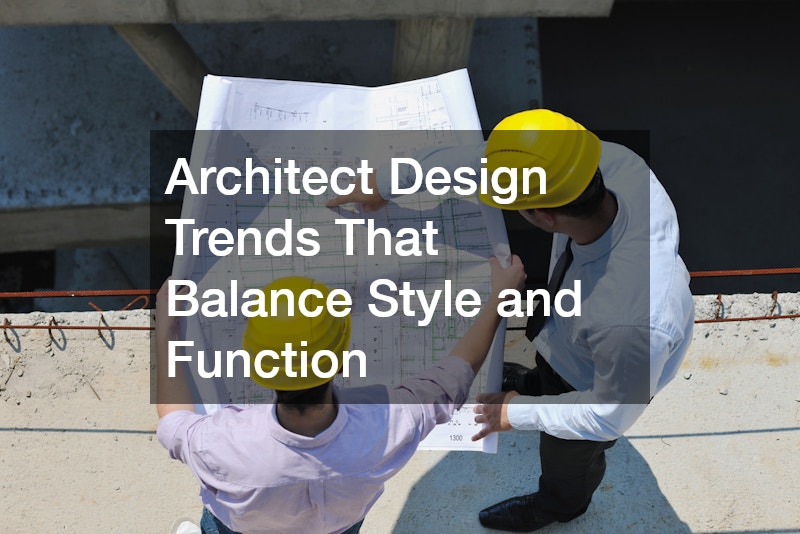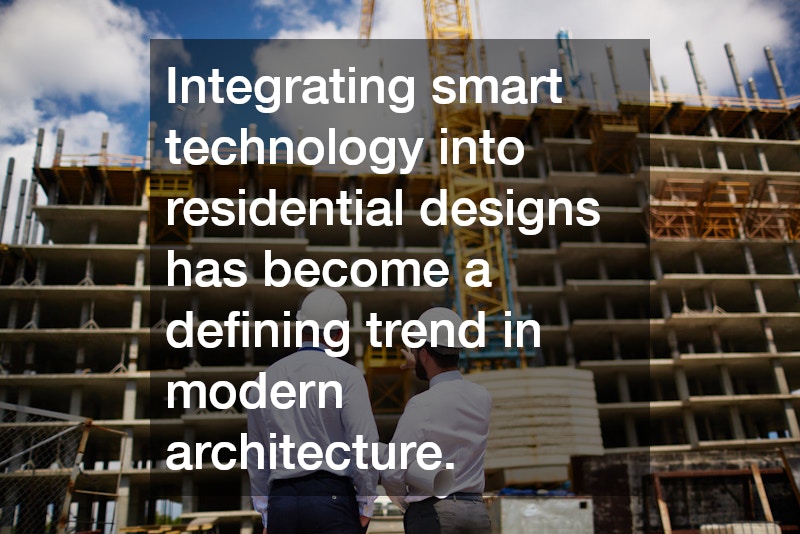

This article explores some architect design trends that effectively blend aesthetic appeal with practical functionality. From sustainable innovations to technology integration, discover how contemporary architecture is shaping our built environment to meet modern needs. By examining the forces driving these changes, we can gain a deeper understanding of modern architecture’s role in creating efficient and beautiful spaces.
What Are the Key Design Trends in Architecture Today?
1. Sustainable and Eco-Friendly Designs
The movement towards sustainable and eco-friendly designs is at the forefront of contemporary architecture. Architects are adopting green building practices, utilizing renewable materials, and integrating energy-efficient technologies. This approach not only reduces a building’s environmental footprint but also enhances property value by making it more appealing to eco-conscious consumers.
A significant aspect of sustainable design is the incorporation of elements like solar panels and green roofs. These features not only reduce energy costs but also contribute to the building’s aesthetic value. The biophilic design trend, which connects occupants with nature, further supports eco-friendly initiatives, improving both mental health and productivity.
2. Smart Technology Integration in Homes
Integrating smart technology into residential designs has become a defining trend in modern architecture. Homes are increasingly being equipped with smart systems that enhance convenience, security, and energy management. From voice-activated assistants to energy-efficient appliances, technology offers homeowners unprecedented control over their living spaces.
Smart technology doesn’t just improve functionality but can also enhance the aesthetic appeal of homes. Invisible home automation systems, such as integrated lighting and HVAC controls, allow for a clean, uncluttered design. As a result, smart homes are not only more efficient but also maintain a sleek and contemporary look.
3. Open and Flexible Floor Plans
Open and flexible floor plans have gained popularity for their ability to maximize space and foster a sense of community. By removing unnecessary walls, these designs allow for greater interaction among occupants and a more fluid use of space. This approach is particularly beneficial in urban settings, where space is often limited.
These flexible layouts enhance functionality and offer a canvas for creative interior design. They enable seamless transitions between different living areas, making the space feel larger and more inviting. The flexibility of these plans also allows for future reconfigurations, accommodating changes in lifestyle and family dynamics.
How Do Architects Balance Style with Functionality?
1. Prioritizing User-Centered Design
User-centered design is a critical aspect of contemporary architecture, ensuring that buildings meet the needs and preferences of their occupants. Architects employ various strategies to gather input from users, incorporating feedback into the design process. This collaborative approach leads to spaces that are not only functional but also resonate with the people who use them.
User-centered design is particularly important in public and commercial spaces, where diverse groups interact. By addressing accessibility, wayfinding, and comfort, designers can create environments that effectively serve a wide range of users. This approach highlights how consideration for user experience can enhance both functionality and aesthetic appeal.
2. Using Versatile Materials
The selection of versatile materials plays a crucial role in balancing style and functionality in architectural design. Materials like glass, steel, and composite composites offer strength, durability, and aesthetic appeal. These materials enable architects to create structures that are visually striking yet practical and sustainable.
For instance, the use of large glass panels can flood interiors with natural light, reducing reliance on artificial lighting while enhancing the building’s visual allure. Steel provides structural integrity, allowing for innovative architectural forms that push the boundaries of design. The choice of materials thus directly impacts both the functional efficiency and the stylistic elements of a building.
3. Incorporating Innovative Storage Solutions
Innovative storage solutions are essential for maximizing space and maintaining order in modern architectural designs. Architects are increasingly integrating built-in storage units that blend seamlessly with the building’s interior design. These solutions ensure that functionality does not come at the expense of aesthetic appeal.
Creative storage solutions are particularly important in urban living spaces where square footage is at a premium. By utilizing vertical space and multifunctional furniture, architects are creating efficient storage options that enhance the space’s usability. This approach demonstrates how ingenious design solutions can effectively balance style and function.
What Role Does Technology Play in Modern Architecture?
Building Information Modeling (BIM) and 3D modeling are transforming how architects design and construct buildings. These technologies provide a comprehensive view of the building process, from conceptualization to construction, enabling more accurate and efficient designs. With BIM, architects can detect potential issues early, reducing costs and ensuring effective collaboration among all stakeholders.
3D modeling allows architects to visualize designs in three dimensions, enhancing communication with clients and collaborators. This visualization leads to better-informed decision-making about layouts, materials, and aesthetics. Such technologies facilitate a seamless balance between style and function, allowing for creative yet practical solutions.
As architecture continues to evolve, the integration of style and function remains paramount. By leveraging emerging trends and technologies, architects design spaces that are not only visually appealing but also sustainable and user-friendly. These innovations pave the way for future advancements, ensuring that architectural designs continue to meet the demands of modern living while maintaining a commitment to aesthetic excellence.
